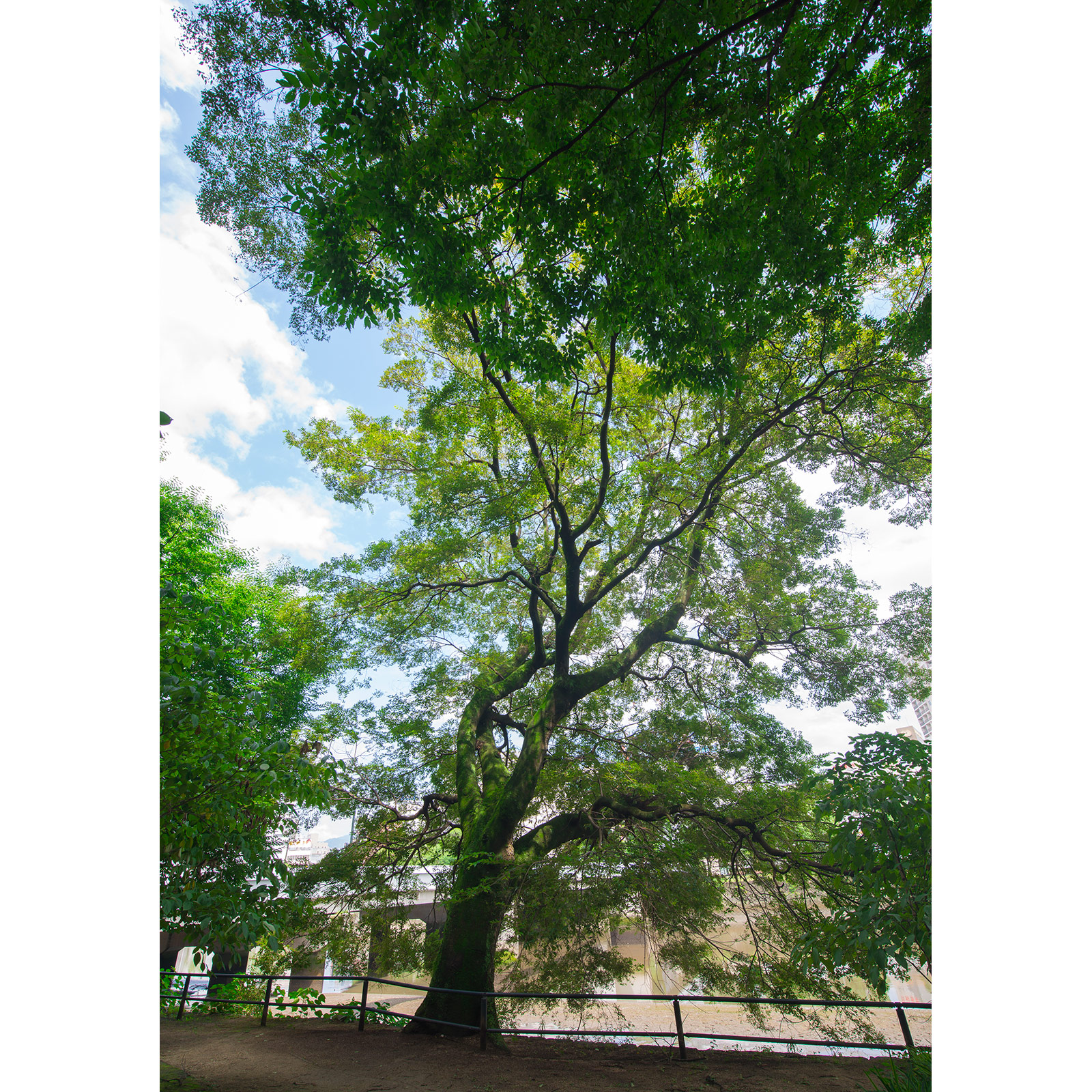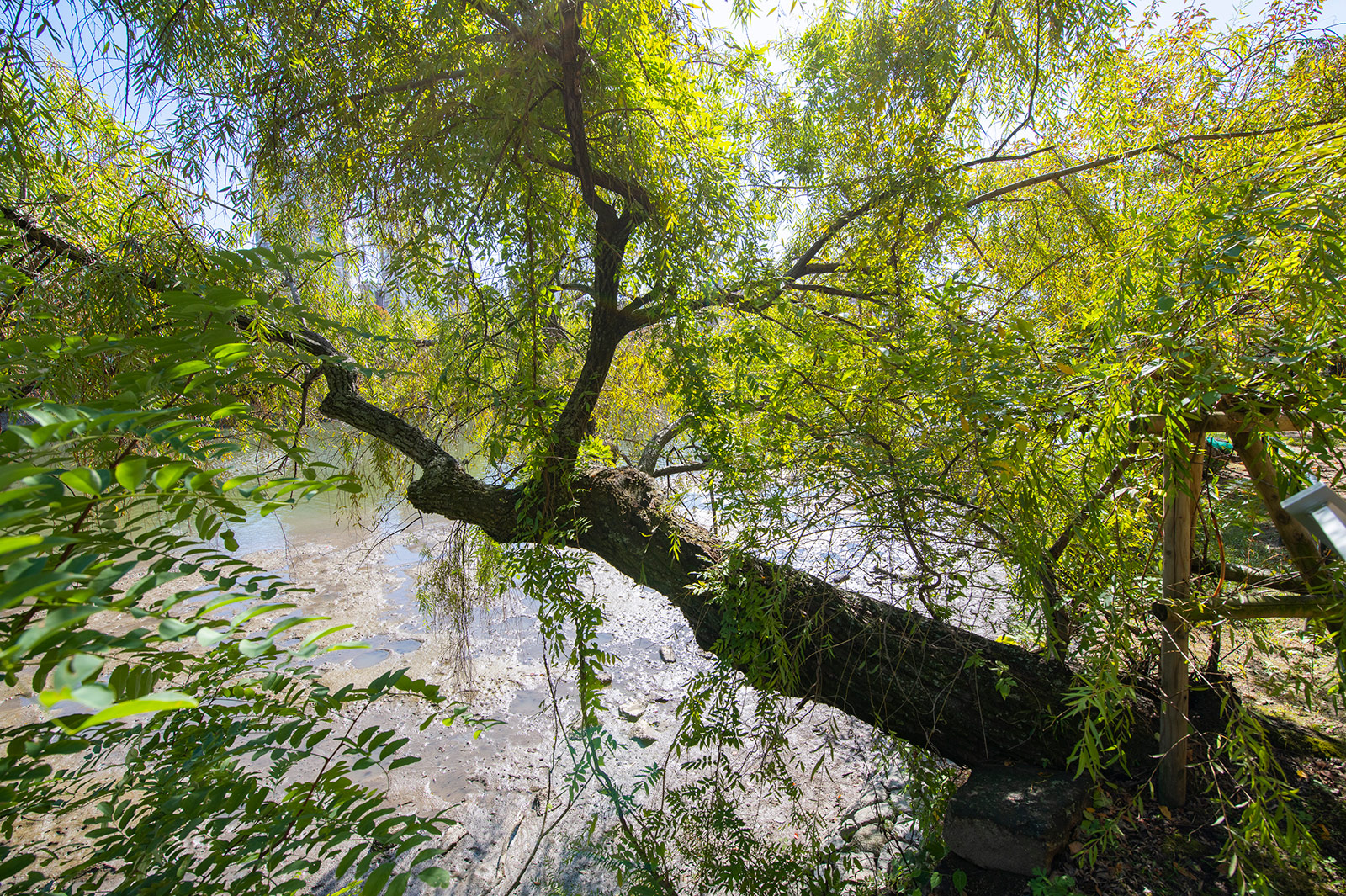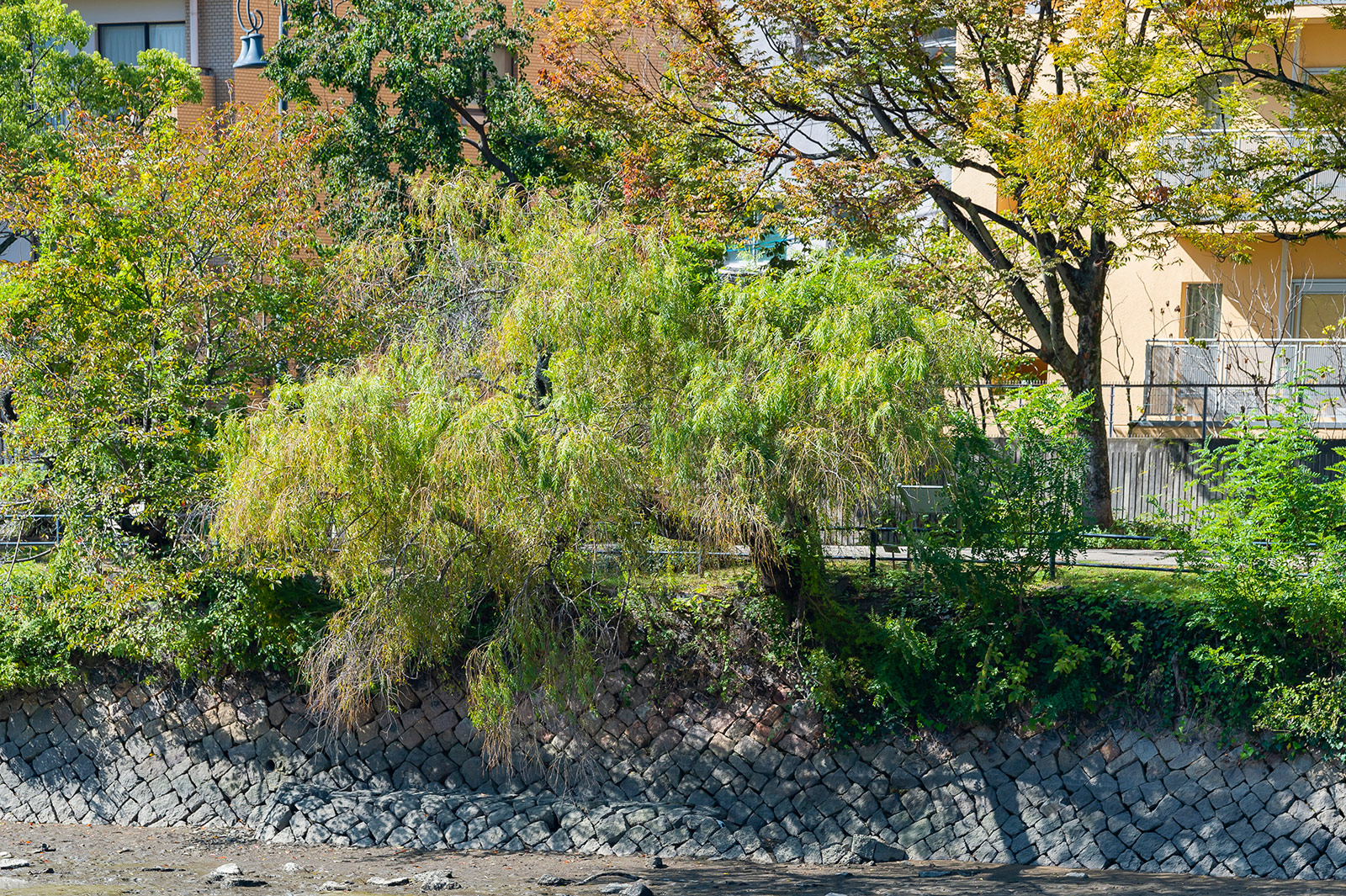京橋川に架かる上柳橋(かみやなぎばし)の西詰に、被爆したエノキとシダレヤナギが立っています。2005年、広島市植物公園で被爆樹木展が開催されたとき、市民からの証言によって、この2本が被爆樹木に登録されました。エノキは、所有者の敷地の前で被爆し、生き残ったものです。シダレヤナギは、作家で詩人の原民喜(はら・たみき)の邸宅内に生えていました。晩年に書かれた詩には、樹木に託した平和の祈りが込められています。
永遠(とは)のみどり 原 民喜
ヒロシマのデルタに
若葉うづまけ
死と焔(ほのお)の記憶に
よき祈(いのり)よ こもれ
とはのみどりを
とはのみどりを
ヒロシマのデルタに
青葉したたれ
On the west bank of the Kamiyanagi-bashi Bridge that spans the Kyōbashi-gawa River stand two hibaku trees: a Japanese hackberry and weeping willow. When a hibaku tree exhibition was held at the Hiroshima Botanical Garden in 2005, these two trees were registered as hibaku trees based on testimonies from survivors. The hackberry survived the bombing in the yard of its owner, and the weeping willow grew inside the residence of author and poet Tamiki Hara. In Eternal Green, a poem written in the last years of his life, he writes of his hopes for peace through greenery:
Eternal Green
Tamiki Hara
In the delta of Hiroshima
Let new green flourish
Let the memory of death and flames
With good prayers be filled
Let there be eternal green
Let there be eternal green
In the delta of Hiroshima
Let leaves of green rain down




